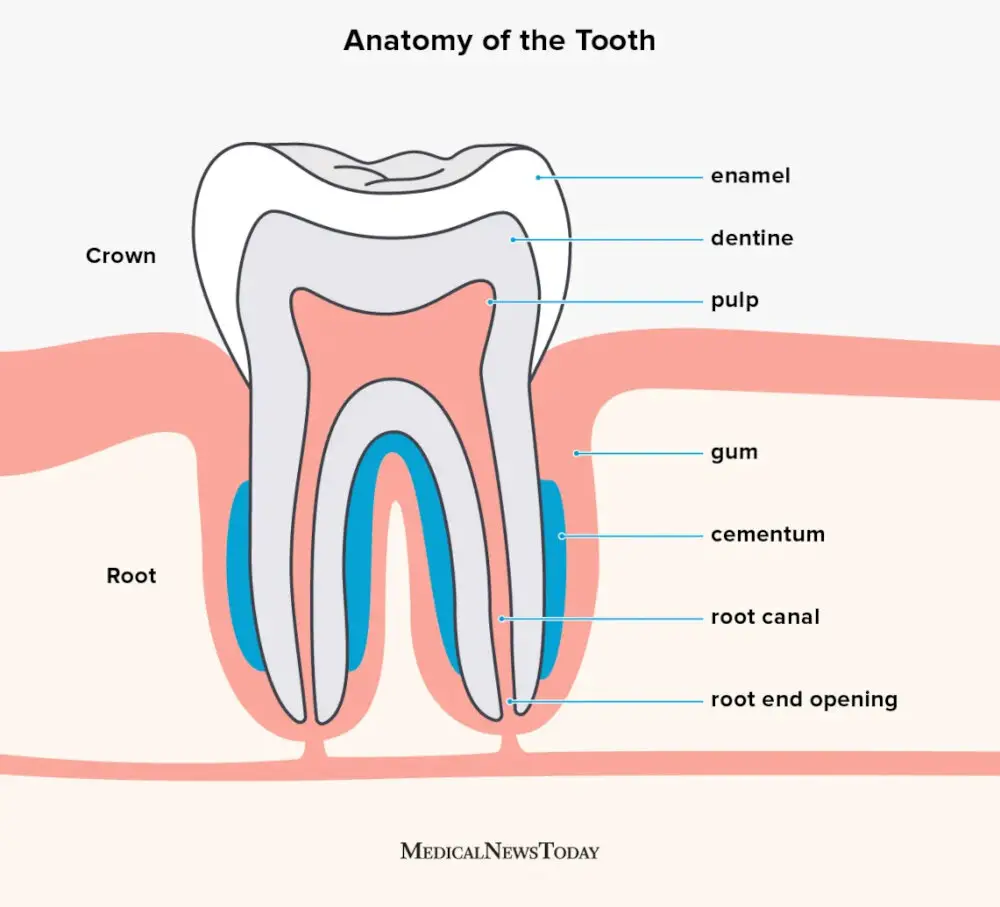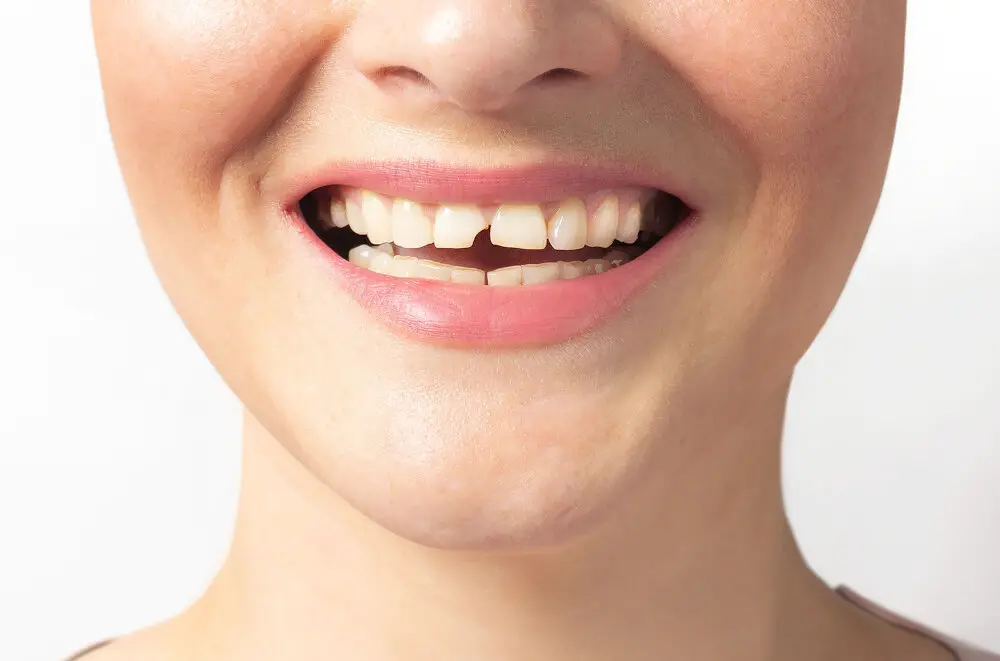Maximizing Comfort: How Long to Use Gauze After Wisdom Teeth Removal

Wisdom teeth removal is a common dental procedure that many people undergo at some point in their lives. It is a necessary step to prevent further damage to the mouth and maintain good oral health. However, the recovery process can be uncomfortable and painful if not handled properly. One of the crucial steps in the recovery process is the use of gauze to control bleeding. But how long should one use gauze after wisdom teeth removal? In this article, we will explore the topic of maximizing comfort after wisdom teeth removal by discussing the appropriate length of time to use gauze and other helpful tips to make the recovery process as smooth as possible. The length of time one should use gauze after wisdom teeth removal varies depending on several factors such as the extent of the surgery and the individual’s healing process. It is important to follow the instructions given by the dentist or oral surgeon to ensure a quick and successful recovery. Overusing or underusing gauze can lead to complications such as dry socket, which can cause severe pain and delay the recovery process. Therefore, it is essential to know the appropriate length of time to use gauze and how to properly care for the mouth after wisdom teeth removal.
Wisdom teeth, also known as third molars, typically begin to emerge between the ages of 17 and 25. Often, these teeth do not have enough room to grow properly, leading to pain, infection, and other dental problems. In such cases, a dentist may recommend wisdom teeth removal. During the procedure, the dentist will use local anesthesia or sedation to numb the area and make the patient comfortable. The teeth are then carefully extracted, and gauze is placed over the extraction site to help stop bleeding and promote healing. It is important to follow post-operative instructions and use gauze as directed to minimize discomfort and speed up the healing process.
Postoperative care is essential for any surgical procedure, including wisdom teeth removal. It plays a crucial role in the healing process and ensures that the patient recovers as quickly and comfortably as possible. Proper postoperative care involves following the dentist’s instructions, taking prescribed medications, avoiding certain foods and activities, and keeping the surgical site clean. Neglecting postoperative care can lead to complications such as infection, prolonged pain, and delayed healing. Therefore, it is crucial to prioritize postoperative care to maximize comfort and ensure a smooth recovery. By following the dentist’s instructions and taking care of oneself, patients can minimize discomfort and return to their daily routine quickly.
What is Gauze and How Does it Help?

Gauze is a thin, woven fabric that is commonly used in the medical field for a variety of purposes. This material is highly absorbent, making it ideal for controlling bleeding and keeping wounds clean and dry. In the context of wisdom teeth removal, gauze is typically used to help control bleeding and promote clotting in the surgical site. After the extraction procedure, a dental professional will typically place a piece of gauze over the area where the wisdom teeth were removed. The patient will be instructed to bite down gently on the gauze for a certain period of time, typically around 30 to 45 minutes. During this time, the gauze will absorb any blood or saliva that may be present, allowing the clot to form and the healing process to begin. In addition to its absorbent properties, gauze can also help to protect the surgical site from infection. By keeping the area clean and dry, gauze can help to prevent bacteria from entering the wound and causing complications. It is important to follow the instructions of your dental professional when using gauze after wisdom teeth removal, as improper use can lead to complications such as dry socket. In general, gauze should be used for as long as your dental professional recommends, typically for the first few hours after the procedure. After this time, it is important to switch to alternative methods of pain management and wound care, such as ice packs and salt water rinses.
Gauze is a thin, loosely woven fabric that is commonly used in the medical field for a variety of purposes, including wound dressing and surgical procedures. It is typically made from cotton or a blend of cotton and synthetic fibers, and is designed to be highly absorbent and breathable. Gauze is available in a range of sizes and thicknesses, and can be used for a variety of applications, including cleaning wounds, stopping bleeding, and protecting areas of the body that have been injured or operated on. When used for wound care, gauze is typically placed directly over the affected area and secured in place with tape or a bandage, and is often changed frequently to ensure that the wound remains clean and free from infection.
Gauze plays a crucial role in postoperative care following wisdom teeth removal. Its primary function is to control bleeding and promote clot formation at the extraction site. Gauze also helps to absorb excess saliva and blood, preventing it from accumulating in the mouth and causing discomfort. Additionally, it provides a protective barrier between the extraction site and the tongue, teeth, and cheek, reducing the risk of accidental trauma. Using gauze for the recommended amount of time can help maximize comfort and minimize the risk of complications during the healing process. However, it is important to follow the dentist’s instructions regarding gauze use to avoid disrupting the clot formation or causing further irritation to the extraction site.
Using gauze after wisdom teeth removal provides numerous benefits to ensure faster healing and minimize discomfort. Gauze helps to control bleeding by applying pressure to the extraction site, which helps blood clotting and stem bleeding. It also helps to absorb excess saliva and blood, preventing it from accumulating and causing discomfort. Additionally, gauze helps to reduce the risk of infection by keeping the extraction site clean and dry. Using gauze for an appropriate length of time, as instructed by the dentist, can help to speed up the healing process and reduce the risk of complications. Therefore, it is highly recommended to use gauze after wisdom teeth extraction to ensure maximum comfort and speedy recovery.
When to Use Gauze After Wisdom Teeth Removal

After undergoing wisdom teeth removal surgery, it is common to experience bleeding from the site of the extraction. To help stop the bleeding and promote healing, gauze is used to apply pressure to the area. However, it is important to know when to use gauze and for how long to maximize comfort during the recovery process. Typically, gauze should be used for the first 24 hours after surgery. It is recommended to change the gauze every 30-45 minutes until the bleeding stops. After this initial period, gauze can be used as needed for any residual bleeding. It is important to avoid using gauze for too long, as it can irritate the wound and delay healing. Additionally, if bleeding persists beyond 24 hours, it is important to contact the oral surgeon for further instructions. By following these guidelines, patients can minimize discomfort and maximize healing after wisdom teeth removal.
Gauze is an essential component in the postoperative care of patients who have undergone wisdom teeth removal. It is primarily used to control bleeding and prevent the formation of blood clots, which can cause complications such as dry socket. Gauze should be used immediately after the procedure and replaced every 30-45 minutes until the bleeding has subsided. Patients should avoid excessive spitting and rinsing, as this can dislodge the blood clot and prolong the healing process. Furthermore, it is important to follow the dentist’s instructions on how long to use gauze after wisdom teeth removal to ensure maximum comfort and optimal healing.
After undergoing wisdom teeth removal surgery, the use of gauze is crucial to control bleeding and promote healing. It is important to change the gauze regularly to prevent the accumulation of blood and bacteria in the mouth, which can lead to infection and discomfort. Timing guidelines for changing gauze depend on the severity of bleeding and individual healing. Generally, it is recommended to change gauze every 30-45 minutes for the first few hours after surgery. As bleeding subsides, the frequency of gauze changes can gradually decrease to every few hours or as needed. It is important to follow the instructions provided by the dentist or oral surgeon to ensure proper healing and minimize discomfort.
There are several factors that may affect how long gauze should be used after wisdom teeth removal. Firstly, the extent of the surgical procedure and the amount of bleeding that occurs will determine the length of time gauze is required. If the procedure is more invasive, or if there is significant bleeding, the gauze may need to be changed more frequently and for a longer period. Additionally, the individual’s overall health and ability to form blood clots may also impact how long gauze is needed. Furthermore, following post-operative instructions carefully, such as avoiding smoking and using a straw, can help reduce the need for gauze and speed up the healing process. Ultimately, it is important to consult with a dental professional to determine the appropriate length of time to use gauze after wisdom teeth removal.
How to Use Gauze After Wisdom Teeth Removal

After wisdom teeth removal, your dentist will most likely provide you with gauze pads. These pads are necessary to control bleeding and promote blood clotting. To use gauze pads properly, fold a piece of gauze and place it directly on the extraction site. Bite down firmly for 30 to 45 minutes and then remove the gauze. If bleeding persists, replace the gauze pad and continue biting down. After the first day, you can switch to using a moist tea bag for 30 to 45 minutes to promote healing and reduce pain. It is important to change the gauze pads every 30 minutes to an hour, or as necessary, to keep the extraction site clean and dry. If you experience excessive bleeding or pain, contact your dentist immediately. Once the bleeding has stopped, you can remove the gauze pads and rinse your mouth gently with warm salt water. Avoid using mouthwash or brushing your teeth for the first 24 hours after surgery, and do not drink through a straw as the suction can dislodge the blood clot and cause dry socket. By following these instructions, you can maximize your comfort and ensure a smooth recovery after wisdom teeth removal.
Using gauze after wisdom teeth removal is an important step in the healing process. First, make sure that your hands are clean before handling the gauze. Take a piece of gauze and fold it into a small square. Then, place the gauze over the surgical site and bite down gently but firmly. Replace the gauze every 30-45 minutes or as needed, ensuring that you dispose of the used gauze properly. It’s important to use gauze for the first 24-48 hours after surgery to control bleeding and allow a blood clot to form. After this time, you can switch to using a warm saltwater rinse to help cleanse the area and promote healing. By following these step-by-step instructions, you can help maximize your comfort and ensure a smooth recovery after wisdom teeth removal.
When it comes to using gauze after wisdom teeth removal, there are certain dos and don’ts that patients should keep in mind. Firstly, it’s important to change the gauze regularly, usually every 30 minutes or so, to prevent it from becoming saturated and causing discomfort. Additionally, patients should be gentle when removing and replacing the gauze, taking care not to disturb the surgical site or dislodge any blood clots that may have formed. On the other hand, patients should avoid chewing on the gauze or using it to clean the surgical site as this can cause irritation and delay the healing process. By following these simple guidelines, patients can ensure maximum comfort and a speedy recovery after wisdom teeth removal.
When it comes to maximizing comfort while using gauze after wisdom teeth removal, there are several tips that can be helpful. First and foremost, it is important to change the gauze regularly to prevent it from becoming saturated with blood and saliva. This will help to reduce discomfort and minimize the risk of infection. Additionally, using a soft and gentle touch when replacing the gauze can help to prevent irritation and soreness in the surrounding tissues. It may also be helpful to use a mouthwash or rinse as directed by your dentist or surgeon to promote healing and reduce inflammation. Finally, taking pain medication as prescribed can help to manage discomfort and make the healing process more comfortable overall. By following these tips, you can maximize your comfort while using gauze after wisdom teeth removal and promote a speedy recovery.
Alternatives to Gauze for PostOperative Care

Postoperative care is an essential part of the recovery process after a surgical procedure. One of the most common methods of postoperative care is the use of gauze to control bleeding and promote healing. However, some patients may be allergic to gauze or find it uncomfortable to use. Fortunately, there are alternatives to gauze that can help provide the same level of care and comfort. One alternative to gauze is the use of foam dressing, which is designed to absorb fluids and promote healing. Foam dressing is made of soft, flexible materials that conform to the shape of the wound, providing a comfortable and snug fit. The dressing is also easy to remove, reducing the risk of further discomfort or irritation. Another alternative is the use of gauze-free adhesive dressings, which are designed to adhere directly to the skin without the need for gauze. These dressings are highly absorbent and provide a secure seal, preventing the risk of infection or further bleeding. They are also easy to apply and remove, making them an ideal choice for patients who prefer a more convenient option.
Alternative postoperative care methods have gained popularity in recent years as patients seek more comfortable and efficient ways to recover from surgical procedures. These methods can include the use of ice packs, herbal remedies, and non-opioid pain relievers. Additionally, some patients have turned to alternative forms of pain management, such as acupuncture or meditation. While these methods may not be suitable for everyone, they can provide a more holistic approach to healing and offer patients a greater sense of control over their recovery. It is important to consult with a healthcare professional before incorporating alternative methods into a postoperative care plan.
When it comes to post-operative care after wisdom teeth removal, there are several methods available to control bleeding and promote healing. One common approach is the use of gauze, which can be effective in absorbing blood and protecting the surgical area. However, there are also drawbacks to using gauze, including potential irritation or discomfort for the patient and the risk of dislodging the dental clot, which can lead to complications such as dry socket. Other methods, such as using tea bags or oral irrigators, may offer additional benefits such as anti-inflammatory properties or gentle cleaning, but they also have their own limitations. Ultimately, the choice of method will depend on the individual patient’s needs and preferences, as well as the specific instructions provided by their dental professional.
Choosing the best postoperative care method for individual needs is crucial to ensure a smooth and comfortable recovery process after wisdom teeth removal. Patients should consider their pain tolerance, medical history, and the complexity of the procedure to determine the most suitable care method. Ice packs, pain medications, and sufficient rest are common methods used to manage pain and swelling, while rinsing with saltwater and avoiding solid foods can promote optimal healing. Additionally, using gauze to control bleeding is an effective measure, and patients should follow their dentist’s instructions on how long to use it. Overall, a personalized approach to postoperative care can help patients minimize discomfort and achieve a successful recovery.
Postoperative care after wisdom teeth removal plays a critical role in minimizing discomfort and complications. It is essential to follow the dentist’s instructions carefully to ensure proper healing of the surgical site and prevent infections. The use of gauze after wisdom teeth removal is one of the most common steps in postoperative care to control bleeding and promote blood clotting. However, it is crucial to use it correctly and for the recommended period to avoid dislodging the blood clot, which can cause dry socket, a severe and painful condition. Patients should also avoid smoking, drinking through a straw, and eating hard or crunchy foods to prevent irritation and damage to the surgical site. Following these instructions and taking care of oneself during the recovery period will help ensure a smooth and comfortable healing process after wisdom teeth removal.
Gauze is commonly used for postoperative care following wisdom teeth removal to control bleeding and promote healing. It is important to change the gauze every 30 to 45 minutes until bleeding stops, and to avoid spitting or rinsing for the first 24 hours to prevent dislodging the blood clot that forms in the extraction site. After the first day, gauze can be used as needed for any residual bleeding. It is also important to use the appropriate size and amount of gauze, and to avoid overpacking the extraction site, as this can delay healing. By following these guidelines, patients can maximize their comfort and promote a speedy recovery after wisdom teeth removal.
In conclusion, maximizing comfort during recovery after wisdom teeth removal is crucial for a smooth healing process. Using gauze as directed by the dentist and changing it regularly is important to control bleeding and prevent infection. Additionally, applying cold compresses to the affected area can help reduce swelling and relieve pain. It is also recommended to consume soft, nutritious foods and avoid smoking or using straws to prevent dislodging the blood clot. Following these recommendations and taking proper care of yourself can ensure a speedy recovery and minimal discomfort.
Conclusion

In conclusion, maximizing comfort after wisdom teeth removal is essential to ensure a speedy and healthy recovery. While gauze is a crucial component of the recovery process, it is important to use it only for the recommended amount of time. Overuse of gauze can lead to complications such as dry socket and prolong the recovery period. Therefore, following the dentist’s instructions on how long to use gauze after wisdom teeth removal is essential. Additionally, maintaining good oral hygiene practices and adopting a soft food diet can also aid in a smooth and comfortable recovery. By prioritizing comfort and taking necessary precautions, patients can have a successful recovery from wisdom teeth removal.







